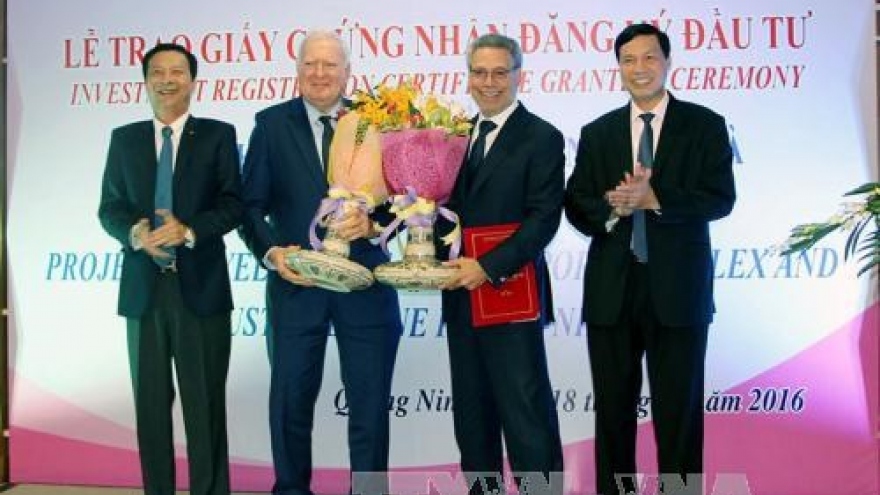Foreign investment could slow due to low localization
VOV.VN - Commercial trade growth for the Asia Pacific Region slowed to 2.3% in 2015, far below the expectations of 2.7% that had been forecast, said the Asian Development Bank in a recently released report.
 |
In the Asian Economic Integration Report 2016 the Bank pegged the region’s gross domestic product (GDP) rate for 2015 at 5.3%, which too fell well short of anticipated growth.
In the report, the Bank warned that foreign direct investment (FDI) inflows that it considers crucial to GDP growth may slow in the near-term on the back of rising protectionism sentiments around the globe.
“Rising protectionism has become an increasing concern to international trade prospects,” the report said, citing the number of anti-dumping complaints filed against the region’s exporters as evidence to support the assertion.
The report noted that the number of anti-dumping lawsuits filed had increased roughly 150% in the five years from 2011 to 2015, jumping by 98 in number from 181 to 279, respectively.
The Bank warned of a more challenging commercial trade and investment environment because of a movement away from globalization and free trade pacts to localization and bilateral trade agreements, which potentially it asserts could negatively impact regional integration.
“Recent political events – such as the Brexit vote in June 2016 and Trump’s victory in the US election – suggest a rising tide of anti-globalization and anti-establishment sentiment among parts of the electorate worldwide,” said the report.
“Despite an unfavourable external environment, developing Asia is expected to maintain 5.7% growth in 2016 and 2017,” said the report.
In dealing with the slow global growth, the Bank believes that greater commercial trade openness and investment can strengthen the region’s resilience, given that in 2015 the Asia Pacific attracted roughly one-third of total global FDI.
Per the report, the Asia Pacific region remained the world’s top FDI destination, having attracted US$527 billion in 2015, up 9% from 2014, while global FDI increased to a record US$1.8 trillion in 2015, with around 30% going to the region.
What this means for the domestic sector businesses in Vietnam is that they need to lay out an agenda to increase their localization rate in the global manufacturing supply chain, said experts at a recent business forum in Ho Chi Minh City.
Most importantly, the domestic sector businesses need to be laser focused on accomplishing the initiative, the experts underscored.
If FDI into the Asia Pacific region were to slow down as suggested— that would mean the domestic sector would face increased competition from their counterparts in neighbouring countries for fewer dollars, the experts noted.
They added that automobile giants such as Toyota, Ford and Honda have already announced they have excluded Vietnam from their expansion plans in the region due to its weak support industries and localization participation in manufacturing.
Citing reports by the Asian Development Bank, the experts pointed out, that only 21% of Vietnam companies have joined the local global supply chain compared with 30% of Thai and 46% of Malaysian companies.
The localization rate of the domestic sectors in the countries within the region will most likely become the number one controlling factor for transnational companies in making the investment decision of where to invest, the experts speculated.
A higher localization rate translates directly to lower costs for transnational companies for such items as transport, less money tied up in inventories of raw materials and intermediary goods, and all around less overhead costs, to name only a few of the savings.
The bottom line is that a low localization rate for the Vietnam domestic sector means lower profits for transnational companies looking to set up shop in the Asia Pacific region compared to other countries, resulting in lower FDI inflows, the experts concluded.


